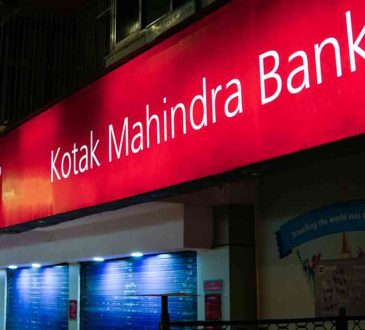The ROI (Return on Investment) of Talent: Adding Value through Effective Human Capital Management

My friends, in my previous article I announced to you that I am going to deal in depth with the investment in the human capital of a business as a determining factor for its development. In this article, we will analyze the logic of the return on invested capital (ROI) regarding the talents of the employees and the way the company should manage them through the relevant departments.
Return on investment (ROI) has traditionally been used to measure how well financial capital is deployed to generate profits. However, applying ROI principles to human capital, or talent is crucial for businesses. The ROI of talent considers quantitative and qualitative impacts on employee productivity, skills, and efforts on key metrics like revenue, costs, quality, and customer satisfaction. Direct contributions include units produced or customers served, while indirect impacts encompass innovation, culture, and knowledge sharing.
Calculating talent ROI requires identifying meaningful metrics correlated to talent initiatives. These could include cost per hire versus time to fill roles, training expenditure versus productivity gains, or retention rates compared to replacement expenses. It’s also important to track soft outcomes like employee engagement, collaboration, and customer feedback over time. Benchmarking talent ROI against industry or internal targets indicates whether the business is optimizing its human assets.
Continually measuring and improving talent ROI ensures organizations get maximum value from their most important resource – their people. It justifies investments in recruiting, learning, well-being, and career development by clearly linking to business objectives. With a talent ROI mindset, HR transformed from a cost center to a profit contributor that quantifiably moves the bottom line.
People are increasingly recognized as a company’s most valuable asset. How an organization manages its human capital can make or break its success. Effective human capital management strategies are crucial for attracting and retaining top talent, developing skills, boosting employee engagement, and maximizing workforce potential. It ensures a business has the right people in the right roles to execute its strategic objectives.
Talent is the key differentiator in today’s competitive landscape. A company’s human capital directly impacts innovation, quality, customer experiences, and overall performance. Organizations that invest in continuous learning and talent development gain a long-term edge over competitors. Strong human capital practices, including competitive compensation, career growth opportunities, and an empowering company culture, are also critical for maintaining a motivated and productive workforce.
Perhaps most importantly, human capital optimization drives tangible business outcomes. Lower turnover saves recruitment and training costs. Higher employee engagement links to increased productivity, customer satisfaction, retention, and revenue. Companies that leverage metrics to measure the ROI of their human resources programs see a significant positive impact on business goals and profitability. Effective human capital management must be a leadership priority in the modern economy.
Attracting top talent requires a strategic and targeted approach to recruitment. It’s important to assess the skills, experiences, and qualities needed for open roles and craft job postings that convey organizational culture and opportunities. Focusing on employer branding through the company website and social media enhances visibility among active and passive candidates. Partnering with reputable staffing firms and expanding campus recruiting broadens the talent pool.
Screening candidates both qualitatively and quantitatively allows the best fit to emerge. Leveraging tools like video interviews, skills assessments, and structured interviews mitigates bias. Analytics on sources of hires point to the most cost-effective channels. Offering competitive total rewards, from salaries to benefits to growth potential, removes barriers for top prospects. Streamlining the application process through applicant tracking boosts positive candidate experience.
Onboarding is another strategic touchpoint. Comprehensive orientations, buddy programs, and accelerated learning put new hires on the fast track to contribution. Tracking retention, performance and even advancement brings insights for continuous recruitment improvements. Strategic practices boost skills, diversity, and quality of hires to ensure optimal organizational talent.
To maximize return on human capital investments, organizations must strategically target the right talent. Clearly defining competencies and skills required for key roles guides focused sourcing and screening. Beyond technical abilities, assessing cultural fit, leadership potential, communication skills, and ambition level predicts long-term engagement and impact. Offering market-competitive compensation for in-demand talent secures top picks.
Quality over quantity preserves training and development budgets. Individualized learning pathways based on strengths and career goals boost motivation and retention. Rotational assignments, mentorship programs, and continuing education nurture versatility across high-growth companies. Leaders who champion diversity and inclusion draw from a broader range of problem-solving perspectives and styles.
Metrics provide visibility into which talent gains the most traction. Tracking performance against objectives, certifications earned, promotions won and recognitions received reveals top performers primed for expanded responsibilities and leadership roles. Their contributions warrant professional conference sponsorships, advanced degree sponsorship, and other retention incentives. Strategic talent investment maximizes human potential and business outcomes.
In today’s rapidly evolving workplace, skills must constantly upgrade to maintain a competitive edge. Continuous training and development is key to keeping the workforce engaged, informed, and prepared for emerging opportunities. It’s crucial to survey employees to understand learning preferences and obstacles to participation. A varied curriculum matching on-demand, virtual, collaborative, and classroom styles cater to different learning journeys.
Tying learning objectives directly to career progression motivates ongoing skills building. Leaders who model lifelong learning set an example for the organization’s culture. Tracking learnings applied on the job and their business impacts demonstrates concrete value. Embedding micro-learning into daily routines sustains knowledge retention. Development conversations guide self-paced exploration of new areas of interest.
A flexible budget accommodates changing skill needs. Creative solutions like tuition reimbursement, peer coaching, action learning projects, and open professional networks supplement formal training at reduced costs. Outcomes include higher employee satisfaction, productivity, and knowledge sharing across teams. Most importantly, continuous development fuels innovation and speeds decisions in a volatile world.
Thriving organizations implement learning strategies that foster a culture where employees are empowered and encouraged to constantly sharpen skills. When leaders visibly invest in their education and promote learning as core to the mission, it trickles down throughout the company. Recognizing and celebrating achievements motivates continued efforts.
Flexible work designs accommodate self-paced curiosity. Rotational assignments across divisions expose personnel to different perspectives and problems. Communities around passions and expertise encourage collaborative progress. Gamification engages talent through skill-based competition and casual peer instruction.
Consistent resources elevate learning to a strategic priority beyond economic cycles. Internal subject experts energize casual peer exchanges. Virtual and social platforms facilitate accessibility and serendipitous connections. Gathering learning insights tailors programs according to passions. Showcasing real impacts keeps relevance tangible.
A genuine culture of learning thrives on passion, not obligation. It sparks intrinsic motivation for continual growth and sharing within a supportive structure. This dynamic environment nurtures the innovative spirit that drives top performance over the long haul.
Meaningful employee engagement requires intentional effort from both managers and organizational leaders. Regular communication that promotes transparency and solicits feedback creates psychological safety for employees. Recognition programs celebrate accomplishments big and small to boost morale. Empowering employees with ownership and autonomy over aspects of their work prevents disengagement.
Targeted surveys identify action items to enhance the employee experience. Town halls and suggestion boxes facilitate two-way dialogue. Diversifying engagement channels through mobile apps and social intranet keeps touchpoints convenient. Linking engagement metrics to business outcomes demonstrates value. Offering professional development, wellness programs and volunteer/community involvement encourages pride in the company’s mission.
Customized engagement strategies cater to different personality preferences and departments. Mentorship circles foster connections across roles and tenures. Social mixers, recognition lunches, and fundraising contests nurture teamwork beyond corporate responsibilities. Management training emphasizes trusting leadership styles that empower high performance through empathy, clarity, and involvement. Consistent efforts to understand employees as individuals strengthen commitment to shared success.
A positive work environment where people feel valued, supported, and motivated to do their best work is key to employee happiness and retention. Leadership sets the tone through practicing empathy, showing appreciation for contributions, and having an open-door policy. Ongoing communication and soliciting input on workplace pain points shows employees their well-being matters.
Accommodating work-life balance through flexible schedules and remote options when possible helps manage stress. Providing ergonomic workstations and gear prevents physical issues. Encouraging networking and social activities introduces colleagues and builds camaraderie. Recognizing both professional and personal milestones like birthdays makes people feel seen as whole individuals.
Positive influences extend beyond the usual workspace too. Prioritizing diversity and inclusion ensures everyone feels respected for their unique experiences and attributes. Offering mental health resources and promoting inclusivity for neurodiverse talents attracts top talent from all demographics. Clear guidelines for acceptable behavior to prevent bullying while still allowing for honest feedback. A work environment where employees thrive personally and professionally ensures high morale and productivity.
Effective human capital management has a profound impact on organizational success, through its influence on attracting top talent, optimizing workforce performance, cultivating employee engagement, and maximizing human potential. Taking a holistic view of talent ROI considers both financial metrics like reducing costs and boosting profits, as well as softer outcomes including innovation, collaboration, and customer satisfaction. This integrated approach recognizes the multidimensional contributions of human capital from both an operational and cultural lens. Measuring qualitative in addition to quantitative impacts provides a more comprehensive perspective on how investments in people strategically position the business for sustainable growth. Organizations that view human capital as a strategic priority and adopt a holistic talent ROI mindset will be best equipped to thrive in today’s evolving landscape.
Written by Fotis Pantopoulos.
Have you read?
Ranking the 50 greatest revenge movies of all time.
Ranked: The World’s Most Powerful Countries For 2023.
Ranked: Countries with the highest share of women in parliament.
The World’s Largest Gold-Producing Countries, 2023.
Ranked: The World’s Most Influential Countries, 2023.
Ranked: World’s Most Forward-Thinking Countries, 2023.
Add CEOWORLD magazine to your Google News feed.
Follow CEOWORLD magazine headlines on: Google News, LinkedIn, Twitter, and Facebook.
This report/news/ranking/statistics has been prepared only for general guidance on matters of interest and does not constitute professional advice. You should not act upon the information contained in this publication without obtaining specific professional advice. No representation or warranty (express or implied) is given as to the accuracy or completeness of the information contained in this publication, and, to the extent permitted by law, CEOWORLD magazine does not accept or assume any liability, responsibility or duty of care for any consequences of you or anyone else acting, or refraining to act, in reliance on the information contained in this publication or for any decision based on it.
Copyright 2024 The CEOWORLD magazine. All rights reserved. This material (and any extract from it) must not be copied, redistributed or placed on any website, without CEOWORLD magazine' prior written consent. For media queries, please contact: info@ceoworld.biz
SUBSCRIBE NEWSLETTER








